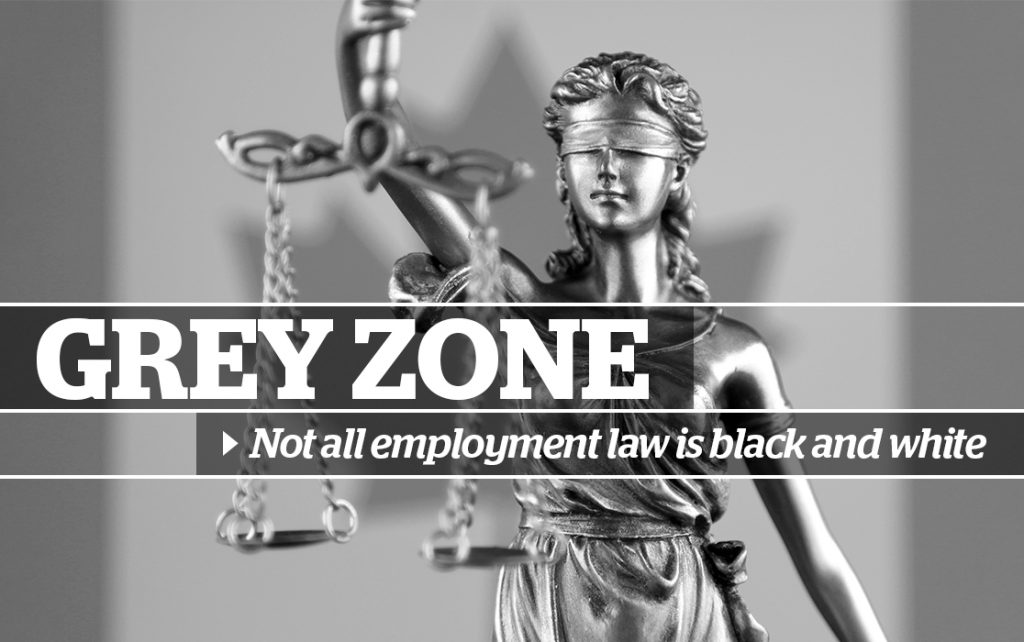
When should the pandemic work-from-home conclude?
November 23, 2020
By
John Hyde
Six legal tips to navigating today's remote-work environment

EDITOR’S NOTE: ‘Grey Zone: Not all employment law is black and white’ is a new weekly series for Talent Canada — a sister publication of OHS Canada. In partnership with John Hyde of Hyde HR Law in Toronto, this series will take a deeper look at issues in which senior workplace leaders and HR professionals need to consider legal implications.
In an announcement that sent shockwaves through social media and news outlets, Pfizer recently announced its development of a vaccine, which it claims may be 90 per cent effective at preventing COVID-19.
Many are looking forward to a return to normalcy. But for many others, the announcement may signal the end to an extended and unprecedented work-from-home trend — a luxury to which many employees have grown accustomed.
No large employer wants to be the first to recall their work force back to the office. Doing so exposes the company to a number of risks — legal, reputational and relational.
Advertisement
On the other side, decades of conventional wisdom tell us that, the longer an employee works from home, the harder it is to get them back to the office. That is not only practical — it is legal advice, too.
This tension has led most large employers to play their cards very close to the vest.
Most employees who have been working from home during the pandemic are being told they will return to the office (but we do not know when); the return will be gradual (though we do not know how gradual); the return will be safe (though, of course, no one can guarantee 100 per cent safety); and (most likely) the future will involve some combination of work-from-home and office work (though we cannot be any more specific than that).
In other words, quite simply, there is no black and white answer.
Why should employers be thinking about this?
That messaging (the “plan to make a plan”) has been holding up so far, but it will not hold up forever.
Inevitably, the tides will shift, and companies will begin making long-term decisions about where their employees will work.
Other employers may find themselves, for whatever reason, trapped in a pattern of work-from-home.
Expectations emerge from those patterns and legal rights emerge from those expectations — even when employers least expect it.
When does a legal right to work from home emerge?
The ever-changing circumstances of the current pandemic have made this area of law very grey.
Employees’ legal rights to work from home will be “put to the test” when employers recall them to work and, the employees either refuse or resign outright, alleging “constructive dismissal.”
To put it simply, a judge considering these circumstances will decide whether a reasonable person in the employee’s circumstances would have done the same.
While this is an oversimplification, what employers need to know is that a right to work from home is based primarily on the employee’s reasonable expectations — not on any hard and fast set of rules.
Those expectations can arise explicitly (as set out within the employment contract or employee handbook), or impliedly (based upon ongoing practice).
Where there is a conflict between what an employer says and what it does, courts tend to favour actions over words. This means that employers who push off the return-to-office plan indefinitely, risk digging themselves into a hole with no easy way out.
What can employers do to reduce legal risks when recalling employees to the office?
While there is no single approach that works in all circumstances, employers should keep the following principles in mind when considering a return-to-office plan:
Focus on messaging
If you have not already, be clear with your employees that they will return to the office – even if you do not have any of the details sorted out. Do not allow any employees to continue under the misapprehension that work from home will be permanent.
Be conservative with your predictions
Reassuring your employees is important, but set employee expectations such that they will be met or exceeded.
Make a plan
The more detailed, the better — but it does not need to be perfect.
Share the plan with your employees to set expectations.
Give as much notice of the return as possible
Employment law liability is measured as pay in lieu of notice. Actual notice offsets that liability, and modulates employee expectations.
Remember that employers can make any change — even fundamental changes — to the terms of employment, so long as sufficient notice is given.
Be flexible
Be prepared to take the wind out of an opportunistic lawyer’s sails.
If an employee responds to the recall with a constructive dismissal claim, employers can simply invite the employee to return to work-from-home on a time-limited basis.
Consult an employment lawyer
Since every situation is different, speak to an employment law specialist for advice on your company’s circumstances.
John Hyde advises management on all aspects of employment and labour law, including representation before administrative tribunals, collective agreement negotiation, arbitrations, wrongful dismissal defence and human rights.